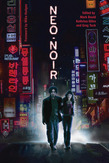London & New York: Wallflower Press, 2009
ISBN: 978-1-906660-17-8 (pbk)
UK 16.14
ISBN 978-1-906660-18-5 (hbk)
UK 45
267pp
(Review copy supplied by Wallflower Press)
It is hard to believe that that the term neo-noir has been in common currency for approximately the past forty years. Bu, t with the exception of the pioneering works of Alain Silver and James Ursini, little attempt has been made to explore the overall intricacies of the term in meticulous detail. Like its classical predecessor, one might also say,” We all know what it looks like but defining it is difficult.” This, of course omits the importance of sound and music that also play key roles in defining meaning in terms of the classical antecedents as well as contemporary manifestations. This series of fifteen essays co-edited by faculty from the Film Studies Department of the University of West of England, Bristol not only goes a long way towards filling in certain gaps, nationally and internationally, but will also become another important foundation for further explorations into a style that is no less challenging than its predecessor.
The anthology opens with a brief, but stimulating, foreword by Mike Hodges, who has recently ventured into the field of noir literature with his first novel Watching the Wheels Come Off (2010). He sows the seeds for the essays that will follow with several astute cultural and historical observations on the British and Hollywood film industries, as well as (indirectly) his own films that are also creatively beyond Get Carter. An introduction by the editors follows interrogating the difficulties of defining neo-noir as well as suggesting the need for a “transnational global approach (that) suggests a more continuous mode of production than that experienced in the US context alone.” (5) Many of the following essays take this lead recognizing the self-reflexive modernist features inherent to this different cultural formation. Kathrina Glitre contributes a stimulating investigation of visual style in “Under the Neon Rainbow: Colour and Neo-Noir” appropriately complemented by Robert Miklitsch’s “Audio-Noir: Audiovisuality in Neo-Modernist Noir”, and Helen Hanson’s masterful “Paranoia and Nostalgia: Sonic Motifs and Songs in Neo-Noir.” This essay not only investigates the sonic paranoid motifs occurring in Klute, All the President’s Men, and The Conversation but also utilizes several critical elements contained in Richard Dyer’s study Pastiche (2007) to very good effect.
Other essays continue to explore the interesting ramifications of comparing classical noir with its “neo” formation such as Carl Freedman’s “The End of Work: From Double Indemnity to Body Heat” that sees both films illustrating different phases of historical and industrial development. Greg Singh explores the relevance of the Max Payne videogame franchise to noir while Ginette Vincendeau adds new material to her already extensive work on classical French noir and neo-noir. Unfortunately, Hyangjin Lee needed to do more homework for her essay on Asian Noir as her opening sentence reveals. “Western scholarship on Asian cinema tends to pay little serious attention to gangster or crime thrillers, despite the significance of the genre in the region.” (118). Kenneth E. Hall, Michael Ingham, and Mark Schilling – to name but a few – would be extremely surprised by this statement. Fortunately, the next essay by Mike Wayne, “British Neo-Noir and Reification: Croupier and Dirty Pretty Things” redeems this collection from this one, dismal flawed contribution, by showing the still relevant role that Marxist analysis can play in studies of this genre. Gregg Tuck’s study of black humor and irony in the films of the Coen Brothers, Lynch, and Tarantino concludes with the most apt statement that can be made of the last director’s work. “Noir is not regenerated by Tarantino’s mode of pastiche, but consumed and negated. What his films offer us…is a post-noir world where we no longer laugh at the dark and nor are we afraid of it. We have simply been anesthetized against it.” (166)
This collection is a rich and stimulating one. Word constraints prevent me saying much about other essays, especially the feminist explorations of Linda Ruth Williams and Rebecca Feasy on Sharon Stone, as well as the co-written essay on anorexic subjectivity in Fight Club and The Machinist, to say nothing about the stimulating final essay by Deborah Thomas on Memento. I can only conclude by applauding the intentions behind this collection and its role in stimulating new highways in analyzing this developing cinematic style and genre.

